Abstract
Vegetable production in the UK shows distinctive trends for each type of vegetable. Data for 2022 shows that cabbage boasts the highest yield, reaching 183kt. This is likely due to high consumption in the UK and the stability and scale of cultivation. Cabbage is widely cultivated, especially in the northern and eastern regions. On the other hand, when divided by use, the amount of tomatoes produced can be mainly classified into those for processing and those for eating fresh, with the UK producing particularly large amounts of tomatoes for processing. Tomatoes in particular are often grown in greenhouses, allowing for stable production that is not affected by climatic conditions. However, greenhouse cultivation requires high energy costs, so in recent years there has been a shift towards energy-saving technologies and sustainable agricultural methods. Overall, UK vegetable production is stable in terms of supply and has diversified production to meet consumer needs. The trend in land use is to cultivate crops suited to the soil quality and climatic conditions, with priority being given to high-demand crops such as cabbage and tomatoes. In addition, sustainable agriculture to reduce environmental impact is becoming increasingly important, and this will have a major impact on future production activities.
Production (by vegetables)
Cabbage’s share of UK vegetable production has shown large fluctuations between 1961 and 2022. Notably, production peaked in 1977 at 1.01Mt, reflecting a period when cabbage became increasingly important in UK vegetable consumption. However, by 2022, production volume had fallen to approximately 183 kt, or 18.1% of its peak. This decline is likely due to the diversification of consumers’ diets, growing health consciousness, and the increasing popularity of other vegetables. Other contributing factors include the reduction in the amount of land needed to grow cabbage, improved agricultural efficiency, and an increase in imported vegetables. Despite the decline in cabbage production, overall UK vegetable production has diversified, with certain crops being grown in preference. For example, there has been an increase in tomatoes, potatoes, and leafy salad vegetables, and sustainable agricultural techniques have advanced in response to global warming and growing environmental awareness. Tomatoes in particular are increasingly being grown in greenhouses, and there is a demand for stable production that is not dependent on the climate. In the future, vegetable production in the UK is expected to continue to change in response to consumer needs and environmental factors, creating a demand for efficient and sustainable agriculture.
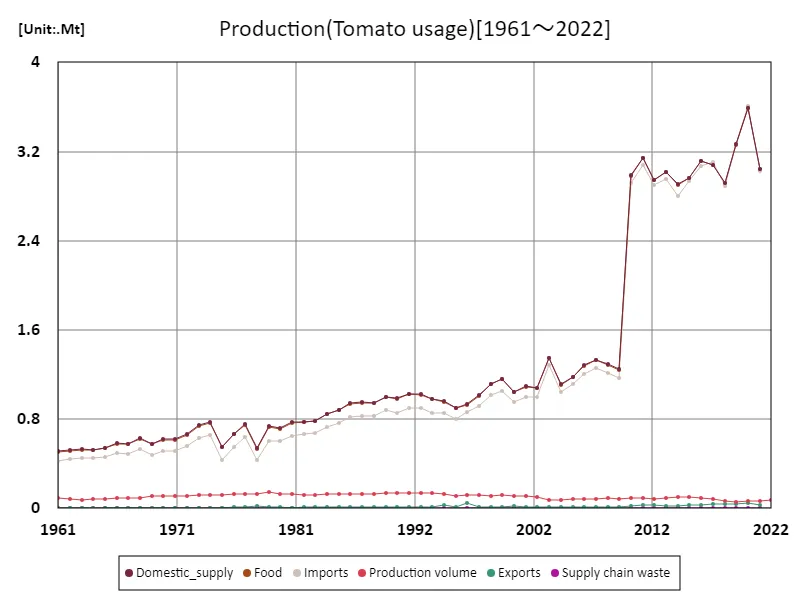

The maximum is 3.61Mt[2020] of Imports, and the current value is about 83.9%
Yield(by vegetable)
Cucumbers in UK vegetable production show notable fluctuations throughout the period 1961-2022. The peak yield was 568t/ha, recorded in 2011, which can be attributed to efficient cultivation techniques and the spread of greenhouse cultivation. However, current cucumber production is only 88% of its peak level, and yield is showing a slight decrease. The decline is likely due to changing consumer tastes, price competition, and the growing popularity of other vegetables. Cucumbers, in particular, are grown mostly in greenhouses, and global warming and rising energy costs are affecting production. While greenhouse cultivation allows for a stable supply regardless of the season, high energy consumption is a challenge. For this reason, energy-saving technologies and sustainable cultivation methods are becoming increasingly important, and there is a demand for the evolution of efficient production methods. Additionally, although cucumbers are popular as salads and snacks, in recent years demand has tended to be relatively sluggish compared to other vegetables. Therefore, it is expected that in the future, production methods and breeding improvements will be developed that can flexibly respond to fluctuations in demand.
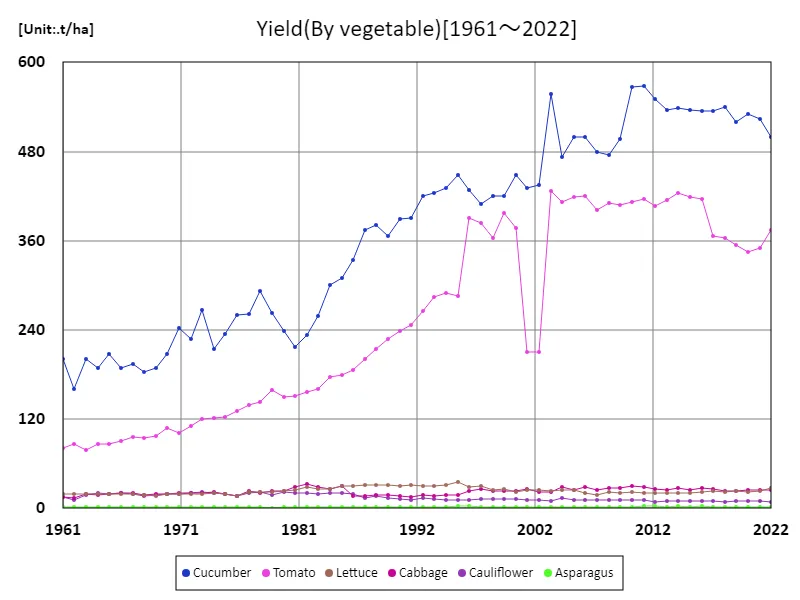

The maximum is 568t/ha[2011] of Cucumber, and the current value is about 88%
Land use (by vegetables)
In terms of land use for vegetable production in the UK in 2022, cauliflower took up the largest area, reaching 17.2kha. This reflects the fact that cauliflower is cultivated extensively due to its high market demand, particularly for processed and frozen foods. On the other hand, the land use area for other major vegetables averages 5.24kha, with the total cultivated area totalling 31.5kha. This total area reflects the diversity of crops grown in UK vegetable production, with regional specialisation in each vegetable production. The large area of cauliflower cultivated is a result of consumer demand and advances in agricultural technology. In recent years, technological innovations have been progressing to improve cultivation efficiency, and with the evolution of soil improvement and irrigation techniques, cauliflower production has become stable. On the other hand, for other vegetables, the cultivation area is being adjusted to respond to fluctuations in supply and demand and climate change. For crops that are particularly susceptible to the effects of climate change, flexible land use is required, including the selection of cultivation areas and changes to harvest times. Overall, UK vegetable production is aligned with land use to the demand for a diverse range of crops, with efficient and sustainable agricultural techniques a future challenge.
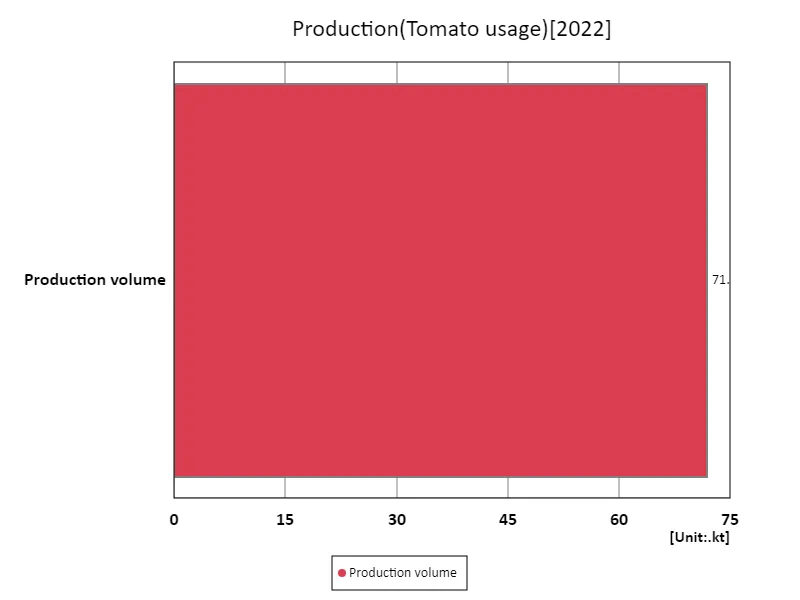

The maximum is 71.9kt of Production volume, the average is 71.9kt, and the total is 71.9kt
Tomato usage
Tomato production and consumption in the UK is showing notable changes, particularly in terms of use. According to 1961 data, the largest use of tomatoes was through imports, amounting to 3.61 Mt. These figures indicate that demand for tomatoes in the UK market is so high that domestic production is not able to keep up with supply. Since then, as tomato production has evolved to focus on greenhouse cultivation, dependency on imports has decreased, but the majority of tomatoes are still imported. Tomatoes are broadly divided into two categories: for eating fresh and for processing. Fresh ones are used in salads and sandwiches, and demand is especially high during the summer. On the other hand, processed tomatoes are used to make tomato sauce, ketchup, soup, etc., and there is stable demand for them throughout the year. Recently, while there has been a stable supply of tomatoes for processing through greenhouse and house cultivation, domestic production of tomatoes for eating fresh is not enough to meet the demand, and there is still a large reliance on imports. In recent years, tomato consumption has increased in line with growing health consciousness, and interest in sustainability has led to attention being paid to advances in greenhouse cultivation techniques and energy-saving technologies. Imports still play a significant role, especially during the winter months, and are essential to ensure a stable supply.
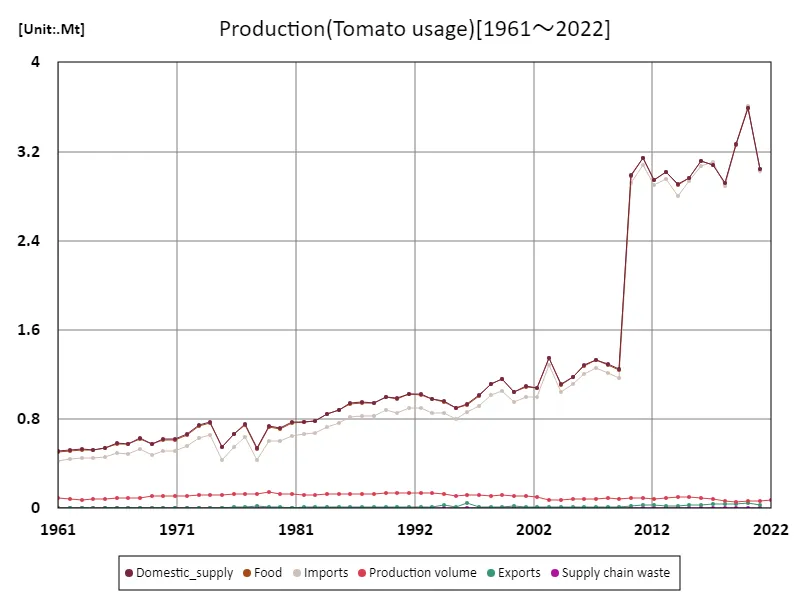

The maximum is 3.61Mt[2020] of Imports, and the current value is about 83.9%
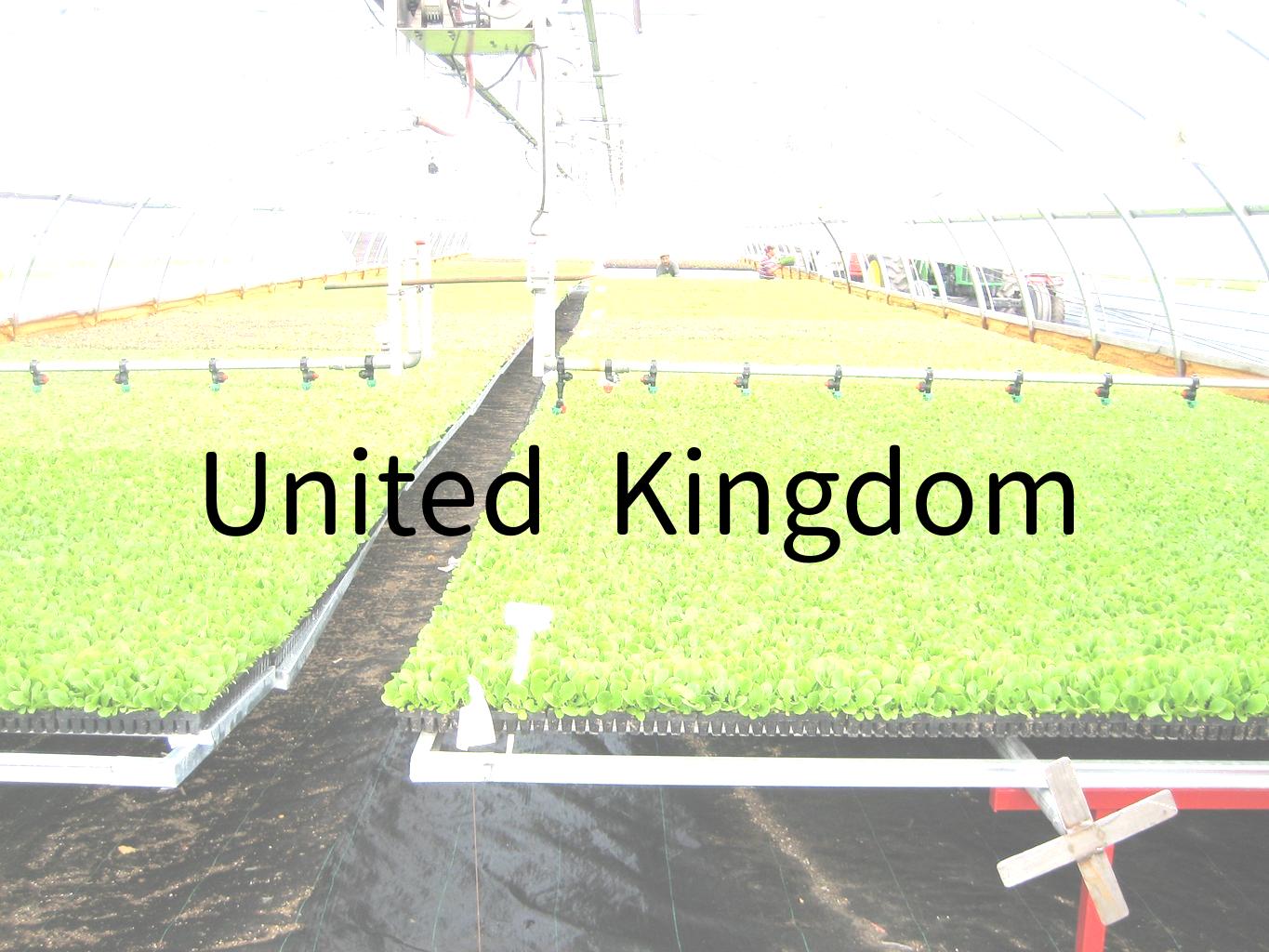


Comments